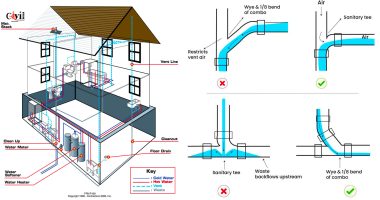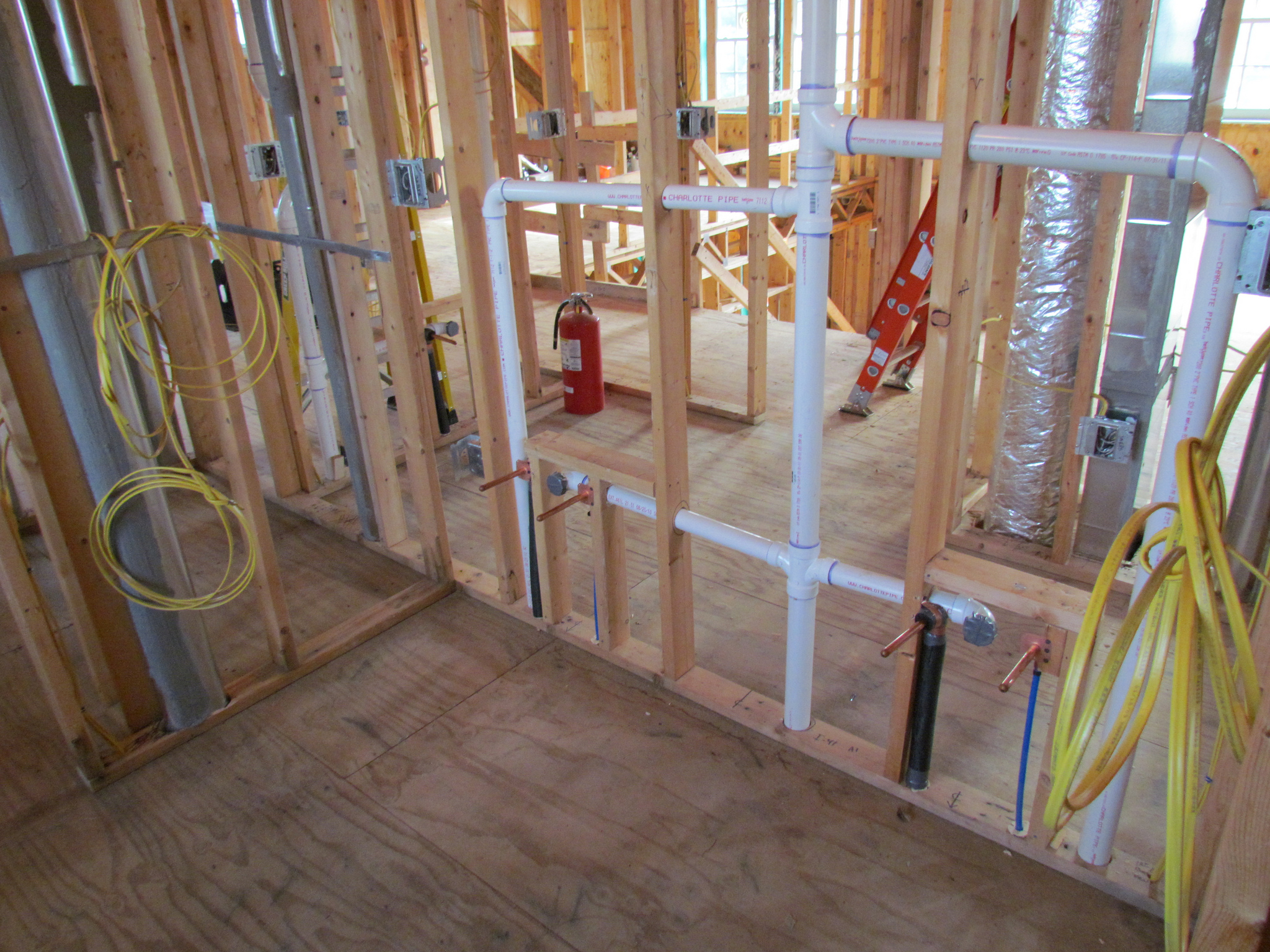Anatomy of Your House's Plumbing System: How It Matters
Anatomy of Your House's Plumbing System: How It Matters
Blog Article
In this article on the next paragraphs you can locate a good deal of outstanding material regarding Plumbing Installation 101: All You Need to Know.

Understanding how your home's plumbing system works is important for every property owner. From delivering clean water for drinking, food preparation, and showering to securely getting rid of wastewater, a properly maintained pipes system is vital for your household's health and wellness and comfort. In this extensive overview, we'll discover the complex network that makes up your home's plumbing and deal pointers on upkeep, upgrades, and managing typical concerns.
Intro
Your home's plumbing system is more than simply a network of pipelines; it's a complicated system that ensures you have access to tidy water and effective wastewater removal. Knowing its components and just how they collaborate can assist you prevent pricey fixings and make sure whatever runs smoothly.
Fundamental Components of a Pipes System
Pipelines and Tubing
At the heart of your pipes system are the pipelines and tubing that lug water throughout your home. These can be constructed from numerous products such as copper, PVC, or PEX, each with its advantages in terms of longevity and cost-effectiveness.
Fixtures: Sinks, Toilets, Showers, and so on.
Components like sinks, toilets, showers, and bath tubs are where water is utilized in your home. Recognizing exactly how these fixtures attach to the plumbing system aids in identifying problems and intending upgrades.
Shutoffs and Shut-off Points
Valves manage the circulation of water in your pipes system. Shut-off valves are vital during emergency situations or when you need to make repairs, permitting you to isolate parts of the system without interfering with water flow to the whole home.
Water Supply System
Key Water Line
The main water line attaches your home to the community water or a personal well. It's where water enters your home and is dispersed to different components.
Water Meter and Pressure Regulatory Authority
The water meter steps your water use, while a pressure regulatory authority ensures that water streams at a safe pressure throughout your home's pipes system, avoiding damages to pipes and components.
Cold Water vs. Hot Water Lines
Comprehending the difference between cold water lines, which supply water straight from the main, and warm water lines, which carry heated water from the hot water heater, helps in fixing and planning for upgrades.
Drain System
Drain Pipes Pipes and Traps
Drain pipes lug wastewater away from sinks, showers, and bathrooms to the sewage system or septic tank. Traps protect against sewage system gases from entering your home and also trap debris that might create clogs.
Ventilation Pipelines
Air flow pipes enable air right into the drain system, protecting against suction that could slow down water drainage and cause traps to vacant. Correct ventilation is vital for keeping the honesty of your plumbing system.
Significance of Appropriate Drain
Making certain proper drainage stops back-ups and water damages. Regularly cleaning drains pipes and maintaining traps can avoid costly repair work and prolong the life of your pipes system.
Water Furnace
Types of Water Heaters
Water heaters can be tankless or conventional tank-style. Tankless heating units warmth water as needed, while tanks store heated water for immediate use.
Upgrading Your Plumbing System
Reasons for Upgrading
Updating to water-efficient components or changing old pipelines can enhance water top quality, lower water costs, and raise the worth of your home.
Modern Pipes Technologies and Their Advantages
Discover technologies like smart leak detectors, water-saving toilets, and energy-efficient water heaters that can conserve cash and minimize ecological influence.
Expense Factors To Consider and ROI
Determine the in advance expenses versus long-lasting cost savings when thinking about pipes upgrades. Several upgrades spend for themselves through reduced utility expenses and fewer repair work.
Exactly How Water Heaters Link to the Pipes System
Recognizing just how hot water heater connect to both the cold water supply and warm water circulation lines aids in identifying issues like insufficient warm water or leakages.
Upkeep Tips for Water Heaters
Consistently purging your water heater to get rid of debris, inspecting the temperature setups, and checking for leaks can extend its lifespan and enhance energy efficiency.
Usual Plumbing Issues
Leaks and Their Reasons
Leaks can take place due to maturing pipes, loosened installations, or high water pressure. Addressing leakages quickly prevents water damages and mold growth.
Blockages and Blockages
Obstructions in drains pipes and toilets are commonly triggered by purging non-flushable products or a buildup of grease and hair. Using drainpipe screens and bearing in mind what goes down your drains pipes can stop obstructions.
Indications of Pipes Issues to Expect
Low water pressure, sluggish drains pipes, foul odors, or uncommonly high water costs are signs of potential pipes problems that ought to be resolved quickly.
Plumbing Upkeep Tips
Regular Inspections and Checks
Arrange yearly plumbing assessments to capture issues early. Try to find indicators of leaks, rust, or mineral build-up in faucets and showerheads.
DIY Upkeep Tasks
Simple tasks like cleaning tap aerators, looking for toilet leaks utilizing color tablets, or protecting revealed pipelines in cold climates can avoid major plumbing problems.
When to Call a Specialist Plumber
Know when a plumbing issue needs specialist know-how. Trying complex repair work without appropriate expertise can bring about more damage and higher repair work costs.
Tips for Reducing Water Use
Easy routines like repairing leaks immediately, taking shorter showers, and running complete tons of laundry and recipes can preserve water and lower your utility costs.
Eco-Friendly Plumbing Options
Consider lasting plumbing products like bamboo for flooring, which is durable and eco-friendly, or recycled glass for kitchen counters.
Emergency situation Preparedness
Actions to Take During a Plumbing Emergency situation
Know where your shut-off valves are located and exactly how to turn off the supply of water in case of a burst pipeline or significant leakage.
Relevance of Having Emergency Situation Get In Touches With Helpful
Maintain contact information for local plumbings or emergency services readily offered for fast action during a plumbing crisis.
Ecological Influence and Preservation
Water-Saving Fixtures and Appliances
Installing low-flow faucets, showerheads, and bathrooms can significantly minimize water usage without giving up efficiency.
DIY Emergency Situation Fixes (When Suitable).
Short-term solutions like making use of air duct tape to patch a leaking pipeline or placing a bucket under a trickling tap can lessen damage until a specialist plumbing professional arrives.
Conclusion.
Recognizing the composition of your home's plumbing system encourages you to preserve it efficiently, saving time and money on repairs. By adhering to routine maintenance regimens and staying educated regarding modern pipes technologies, you can guarantee your plumbing system runs effectively for years ahead.
HOW YOUR PLUMBING SYSTEM WORKS
Which Pipes Do What?
Blue lines = fresh water supply entering the building Red lines = hot water supply entering the building Grey lines = pipes carrying waste away from the building and venting pipes carrying gases away from the building (through the roof) YOUR MAIN PLUMBING SYSTEMS
There are two main plumbing systems that support your home s basic plumbing needs one that brings clean water into your home, and one that sends dirty water away from your home. Connected to the toilet, bath, shower, and other faucets in your home, these two systems keep your water flowing in the right directions.
ACCESSING FRESH WATER
Fresh and clean water is brought into your home through the main water supply line . Filtered through one pipe, this water is pressured to flow into the various fixtures in your home at any given time.
This water can be sourced from a well located on your property, a pond or river (mostly cottages), or, as in most cases, from the city s municipal water treatment centre. However, it is important to note that water that is untreated, such as the water siphoned from ponds or rivers, may not be safe to drink. Personal water supplies always need to be treated for hardness and contaminants before consumed.
MUNICIPAL WATER SUPPLIES
Improve taste and odour Remove sediment Eliminate hardness Reduce chlorine COLD WATER SUPPLY VS. HOT WATER SUPPLY
Cold water flows into your home or building through the service line, which then distributes hot or cold water to your fixtures. This line is most commonly run through a central column that runs floor to floor. Hot water runs in short and straight pipes as the longer the pipeline, the more heat that will be lost in the transfer. Having shorter pipes also allows residents to access hot water more quickly.
WASTE WATER SYSTEM
Your wastewater system is divided into two parts pipes that send wastewater away from your home and venting pipes that send sewer gas away from your home. Sewage water travels through pipes that flush the water and waste towards local sewers that are operated and managed by your city or town. Most sewer systems rely on gravity to move the wastewater to where it needs to go.
The further away from your toilet or sink, the larger wastewater pipes become. This allows for waste to be disposed of from various parts of your home or business at once without pipe blockages. The angle and flow of these pipes are also essential for keeping your waste pipes clear of build up.
https://harrisplumbing.ca/how-your-home-plumbing-system-works/

I recently found that post about Plumbing Installation 101: All You Need to Know when surfing around the search engines. Enjoyed reading our write up? Please quickly share it. Help others locate it. Thanks a lot for taking the time to read it.
Click Here Report this page